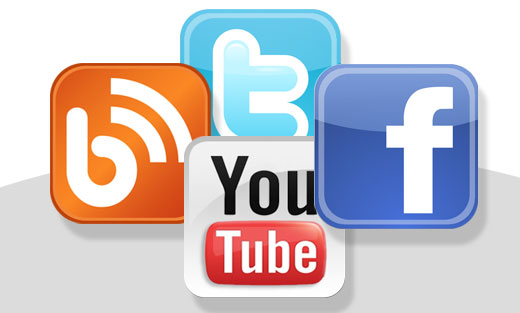
Social media’s impact on broadcast journalism is reshaping the way in which we all get, share and discuss news. According to a recent Pew Research study, about two-thirds of U.S. adults use Facebook, and approximately half of those users get news from the site. That means that roughly thirty percent of the population gets news from Facebook, while ten percent access news from YouTube, followed by eight percent from Twitter.
Nowhere is the effect of social media on news consumption more evident than in the coveted 18-34-year-old demographic. According to the recent Media Insight Project report, conducted by the American Press Institute (API) and the Associated Press-NORC Center for Public Affairs, Millennials spend much less time with traditional media like television and newspapers than previous generations.
However, that doesn’t make them less interested in news – 85% said keeping up with news was at least “somewhat important” to them, 69% get news daily and 86% “see diverse opinions on social media.”
What does this mean for broadcasters?
While some in the industry worry it spells trouble for them, that isn’t always the case. Many viewers continue to watch the evening news on a regular basis, while updates from their favorite station’s Facebook or Twitter feed fill in the gaps between regularly slotted news times. When viewers miss something or want more info about a topic, often the first place they’ll go is the Facebook page of the media outlet that aired the story.
For some younger viewers who spend less time watching regular news broadcasts, a shared story on social media might lead them to a broadcaster’s website, increasing ad revenue – and the likelihood of viewing the channel when they do turn on the TV.
When Millennials want to know more about a new topic, search is still the dominant method used (57%), but news sites are the second most common (23%), with only 7% saying they seek more information on Facebook, according to the API study.
This is especially good news for broadcasters when you consider that most news topic searches bring up results from media outlets, including local and national television stations.
Sharing news on social media helps generate new likes or follows for a news outlet’s social media profiles, and it’s happening more frequently: The Pew study says half of social media users have shared news stories, pictures or videos, and almost as many (46%) have discussed news topics on social platforms.
The more a video or story is shared, the more traffic is generated for the media outlet.
The one downside is that users who go directly to a broadcaster’s website spend, on average, about three times longer browsing the site than those who navigate there from a social media platform. However, time spent on the site is roughly the same between users who arrived there from a routine web search and users who were referred from social networks.
Some types of news fare better in social media land than others.
By far the most popular topic is entertainment – the Pew study shows almost three-quarters of Facebook users view this type of story regularly.
About two-thirds of users frequently view stories about people or events in their community, making social media especially important for local news organizations like television and radio stations in small markets. However, the API report says that 45% of Millennials regularly follow five or more “hard news” topics, so these are still very important in social networks.
While social media offers many opportunities for broadcasters to expand reach and increase ad revenue, it also offers new opportunities to learn about news as it happens.
Two Keys For Success In The New Media Landscape
The ease with which the average person can upload a video of breaking news means that anyone can report on a big event. It can be tempting for reporters to run with news they first see on social platforms, but it’s important to remember that the same rules apply to social media as any other news source: Fact-checking before repeating a story is essential.
A recent ING study shows that about one-third of journalists don’t think social networks are good sources of accurate information, but only 20% say they always check their facts before publishing. Roughly half of those surveyed also thought the average user was more trustworthy than an organization, possibly because organizations are likely to spin a story in their favor.
The good news is that the many hoaxes, pranks, and situations of misinformation found on social media lead users back to reputable news sources – like broadcasters. If readers are skeptical of a story’s veracity, they are more likely to consult a trusted media outlet’s social profile for confirmation.
As long as broadcasters maintain accuracy standards, this gives them a distinct advantage: Millennials in the API study said when they seek more information on a subject, their two most important criteria are that they “know the source well” (57%) and that the digital source is “transparent and rich with references and links.”
Keeping these two things in mind can help broadcasters succeed in the new landscape of news and social media.